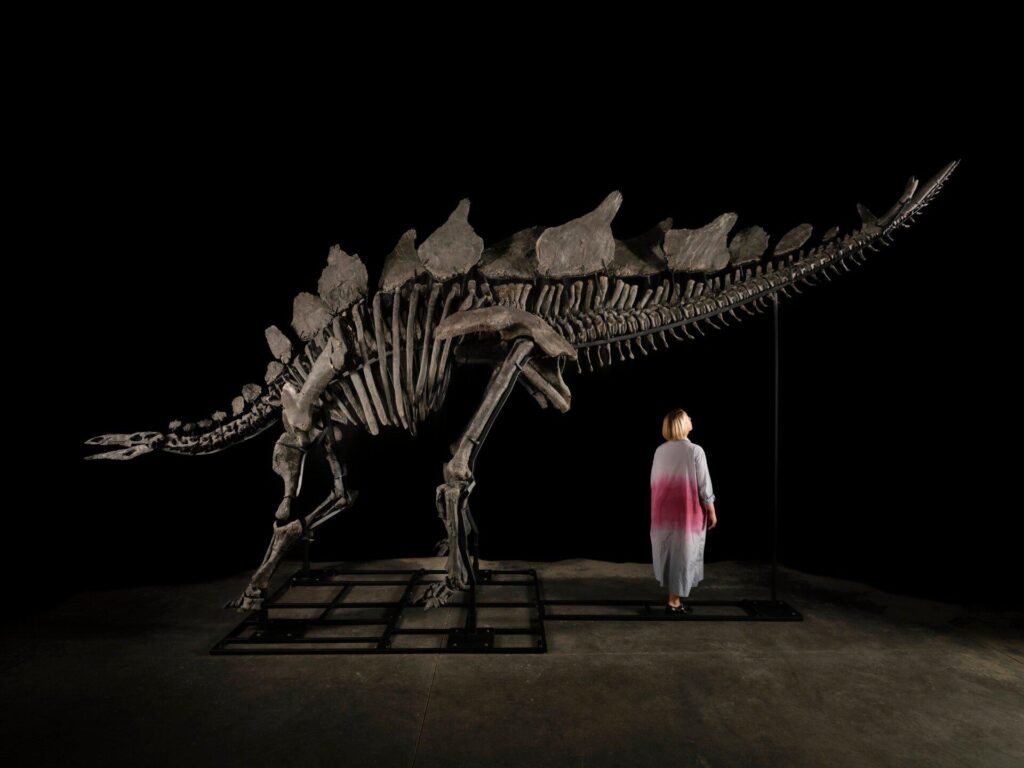In an unprecedented transaction that sent ripples through the paleontological and financial worlds, a rare Stegosaurus fossil has been sold to a hedge fund billionaire for a staggering $45 million. This jaw-dropping sale has eclipsed all previous records for fossil transactions, highlighting the increasing intersection between high finance and the world of ancient treasures.
A Transaction of Historic Proportions
The sale of the Stegosaurus fossil marks a significant milestone in both the collecting community and the marketplace. The fossil, estimated to be approximately 150 million years old, was unearthed in one of the richest dinosaur regions in the world—Morrison Formation in North America. Its impressively well-preserved state and near-complete skeletal structure contributed to its astronomical valuation.
Who is the Buyer?
The record-breaking purchase was made by a hedge fund billionaire whose name remains undisclosed. This mysterious figure joins a growing list of ultra-wealthy individuals investing in unique artifacts, ranging from fine art to rare fossils. Such investments not only satiate a collector’s passion but also serve as alternative assets in diversified investment portfolios.
Why Are Fossil Prices Skyrocketing?
Several factors contribute to the escalating prices of fossils. Apart from their inherent scientific value and rarity, the growing interest from affluent individuals has significantly driven up demand. This surge reflects a broader trend where rare, tangible assets are seen as both status symbols and viable long-term investments.
Cultural and Scientific Impact
The sale of such a significant fossil to a private owner raises questions about accessibility and the stewardship of cultural heritage. While institutions like museums and universities have traditionally housed these relics, preserving and studying them for public benefit, the influx of private ownership could limit broader access. However, it’s worth noting that some private collectors do collaborate with scientific institutions, lending their collections for research and public display.
Public vs. Private Collections
The balance between public and private collections is delicate. On one hand, private ownership can limit public access to significant artifacts. On the other hand, it can also lead to the preservation of fossils that might not otherwise receive the necessary care and attention due to financial constraints in public institutions. Furthermore, private collectors often possess the financial means to outbid museums and universities in acquiring such artifacts.
The Role of Auction Houses
Auction houses play a pivotal role in this market, acting as intermediaries between sellers and high-net-worth buyers. They bring visibility to such rare items, often hosting exclusive, high-profile events that attract global attention. The Stegosaurus fossil, for example, was procured through an auction, showcasing the fossil to a select audience of potential buyers.
Scientific Community’s Perspective
The scientific community has mixed feelings about such sales. While the financial investment can sometimes support paleontological research, there’s also concern about vital specimens being locked away in private collections. The primary objective for scientists is the study and preservation of these fossils for future generations, and private ownership can sometimes hinder this goal.
Protecting Fossil Heritage
Efforts to protect fossil heritage continue to evolve. Countries are updating their laws to safeguard their paleontological resources, and international guidelines are being developed to address the trade of fossils. These measures aim to balance the preservation of our natural history with the interests of collectors and researchers alike.
Looking to the Future
The sale of the Stegosaurus fossil for $45 million is a landmark event that underscores the growing value placed on fossils by collectors and investors. It raises important questions about the future of fossil preservation and the role of private collectors in the stewardship of our shared cultural heritage. As long as there are measures in place to ensure that these treasures are accessible for research and education, the trend of private fossil ownership might find a balanced path forward.
For further reading on this fascinating development, visit the original article on Gizmodo.

Hozzászólások